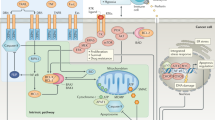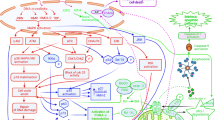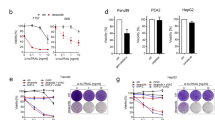Abstract
The search for novel antitumour drugs has reached a plateau phase. The carcinomas remain almost as intractable as they did 40 years ago and the need for effective therapy is pressing. There is an argument that the current pharmacopoeia is sufficient but, to be effective, the biochemical mechanisms of drug resistance must be circumvented. In tackling the question of why certain cancer cells are resistant, the converse question of why others are sensitive still remains to be answered fully. Asking the fundamental question of why and how a cell dies may provide clues as to what avenues lie open for improved chemotherapy. In this review we survey the recent literature on cell death and we argue that it is possible that the outcome of chemotherapy may be determined by the response of the cell to the formation of the drug-target complex, and/or its sequellae, rather than to the biochemical changes brought about by the drug alone. One of these responses, determined by the phenotype of the cell, may be activation of a genetic programme for cell death.
This is a preview of subscription content, access via your institution
Access options
Subscribe to this journal
Receive 24 print issues and online access
$259.00 per year
only $10.79 per issue
Buy this article
- Purchase on Springer Link
- Instant access to full article PDF
Prices may be subject to local taxes which are calculated during checkout
Similar content being viewed by others
Author information
Authors and Affiliations
Rights and permissions
About this article
Cite this article
Dive, C., Hickman, J. Drug-target interactions: only the first step in the commitment to a programmed cell death?. Br J Cancer 64, 192–196 (1991). https://doi.org/10.1038/bjc.1991.269
Issue Date:
DOI: https://doi.org/10.1038/bjc.1991.269
This article is cited by
-
Genistein promotes cell death of ethanol-stressed HeLa cells through the continuation of apoptosis or secondary necrosis
Cancer Cell International (2013)
-
Heat shock transcription factor-1 suppresses apoptotic cell death and ROS generation in 3-nitropropionic acid-stimulated striatal cells
Molecular and Cellular Biochemistry (2012)
-
Tolerance to drug-induced cell death favours the acquisition of multidrug resistance in Leishmania
Cell Death & Disease (2011)
-
Protein analysis based on molecular beacon probes and biofunctionalized nanoparticles
Science China Chemistry (2010)
-
Electrokinetic measurements of dielectric properties of membrane for apoptotic HL-60 cells on chip-based device
Biomedical Microdevices (2007)



